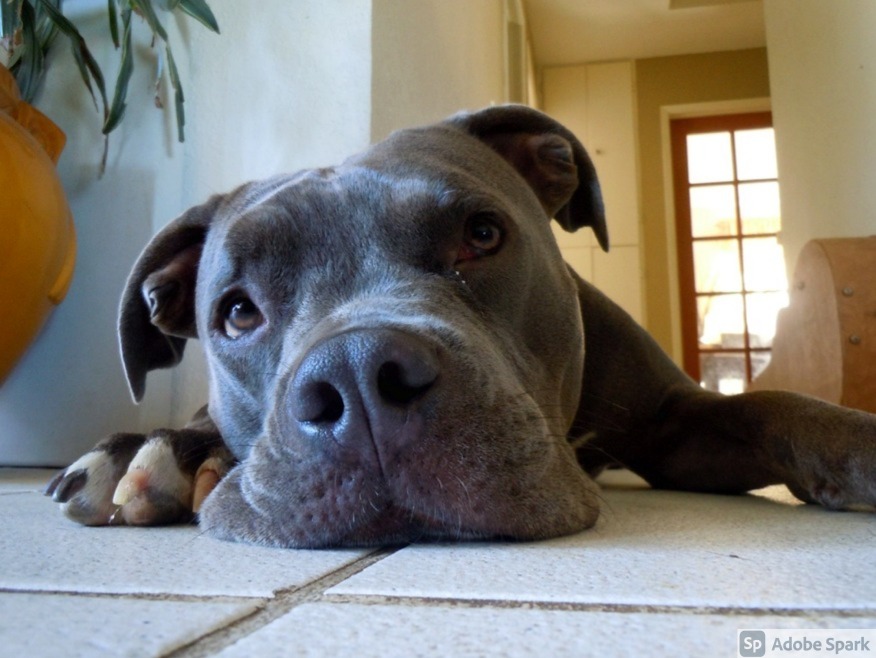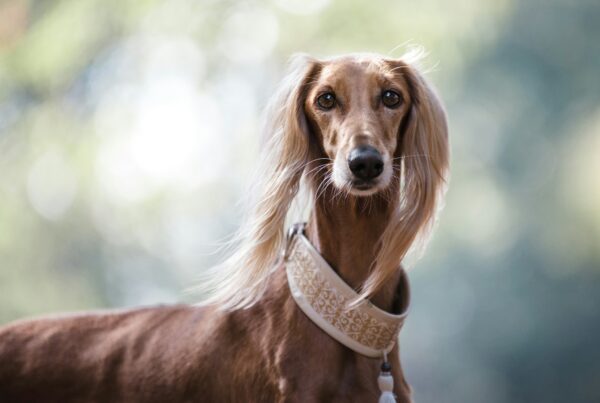Adopting a dog that has been previously abused is a brilliant opportunity to make a huge difference in the life of an innocent animal that has been repeatedly mistreated by humans. However, before you make this commitment, you have to be prepared that there will be challenges along the way and that you will have to be armed with patience and love to be able to tackle them successfully.
Abuse leads to fear and aggression, so a dog that has suffered in its life will be more likely to bite, growl or bark. Your new pooch may also find being in their new home overwhelming so they might exhibit fearful behavior, such as hiding and keeping their distance. You will have to work to gain the trust of your new pet. To help you do that, we asked the dog experts at puppies.co.uk to put together a list of essential tips on how to offer the best care for an abused dog.
1. Learn to Spot the Triggers
Trauma from abuse can be triggered in different ways. Even if the adoption agency wasn’t aware of any abuse, you should observe your new dog’s reactions and look for things that trigger a fearful or aggressive reaction. It could be an action that your dog interprets as a threat (raising your voice or your hand) or it could be a specific object that has been used to hurt the dog by their previous owners (a remote control, a baseball bat, a newspaper or an umbrella). Your pooch could also exhibit a disproportionate response to being touched in a specific area, such as the lower back or head, if it has been hit repeatedly in that area.
If you spot specific triggers that make your dog uncomfortable and could be potential signs of abuse, learn what they are and mould your behavior, as well as their environment to avoid the stressors. With time, your new pooch will build trust with you and begin to feel at home, so you can gradually work to reverse the negative impact of their bad past experiences with people.
2. Show Your Dog Love
If you are about to adopt a previously abused dog, you must always remember that your new pet has not been treated kindly by humans so far and it will have difficulties trusting you at the start. This is why it’s important to show them unconditional love and be prepared to invest extra time to build a bond.
Spend time with your pooch in a quiet space, offer treats, toys and praise every time they do something well. Likely until now, they have only had negative feedback from humans, so this will be a welcome change. If your dog doesn’t show aggressive behaviour when touched, you can try giving it a calming rub or a massage. Play time that suits your dog’s personality is also important but make sure new activities are introduced gradually to not overexcite your pup. Eventually, a warm, loving approach is the key to calming an anxious dog.
3. Give Your Dog Space
Sometimes human interactions will become overwhelming for a previously abused dog and you shouldn’t take it personally. In fact, you should make sure that your dog has a safe, quiet space where they can retreat if they feel scared, anxious or agitated.
Choose an area in your home that becomes your dog’s space. Remove all the clutter and leave just a few things that are comforting to your pet, such as a cushion, a blanket or a soft toy. This will give your furry friend the option to retreat and calm down if the situation is becoming too much for them.
4. Keep it Calm
Negativity is a huge no-no when dealing with dogs that have suffered abuse. Losing your cool with them can set you far back in your training and bond-building. Raising your voice or threatening them with your body language even if you mean no harm will bring back trauma, causing your dog to feel distrustful towards you.
This is why if you feel like you are getting frustrated with their behavior, take a step back. If it happens during training, for example, it’s time to end the training session. Taking a pause will help both you and your dog cool off and come back to it later with a more positive and productive attitude.
5. Feed Your Dog Well
Neglect towards dogs is usually reflected in the way they have been fed. Depriving the animal of food could have been used as a punishment or it could simply have been the case of the owner not caring enough to feed their pet. Therefore, many dogs that have been abused are fearful of not receiving a meal, even if they are not malnourished anymore.
It’s important to show your new pet that there is nothing to be afraid of by providing regular high-quality meals. You may notice that in the beginning the dog is a lot more eager to eat, gobbling up the food quickly or they may show an exaggerated reaction to the sight of food. However, with time, as they adjust, they will begin to get used to their new balanced diet and will see meals as a normal part of their routine, approaching meal time more calmly. This is a good sign.
6. Positive Training Methods
Training is the best way to shape the behaviour of any dog but positive reinforcement is especially important when it comes to dogs that have suffered abuse. Be generous with treats when they do something good and focus on teaching them commands that can prevent or deescalate unwanted stressful situations provoked by their past trauma.
A good example is the “Leave it” command. When mastered, this command can be used to make your dog disengage from a negative interaction with another dog or a human. You can teach your dog to do that by showing them a treat and letting them sniff it. Once they turn their head away expecting to be given the treat, say “yes”, add the command “leave it” and immediately give them a better treat than the first. Repeat until the dog learns the correct response to the cue and then begin to introduce it in real-life situations (e.g. say “leave it” when your dog begins barking at another dog and treat them when they stop).
7. Carefully Teach Them to Socialize
Abused dogs tend to exhibit behavioral issues when socializing, be it with people, other animals or both. To correct this, you have to introduce social interactions slowly, starting by showing other people and dogs from a distance, then moving on to meeting close family and friends and then moving on to strangers.
Sometimes, when you are dealing with a severely abused dog, handling socialization may not be something that you can do on your own. If that seems to be the case, it’s always a good idea to speak to a dog behavioral therapist. They will be able to assess your dog’s behavior and come up with specific techniques that are most appropriate for their situation.
8. Be Patient
Healing takes time, so don’t give up on your four-legged friend. Patience is the key to building a successful relationship with an abused dog. It applies to everything we’ve talked about so far – from training to feeding, bonding and socializing. You have to be in it for the long run and never expect immediate results.
Alway keep in mind that your new four-legged friend has a reason for reacting the way they do and that reason is humans, so you have to pace yourself and invest more time and effort than if you had decided to buy a new puppy from a responsible breeder. Yet, once you see the positive effects and the difference that you can make in the life of a dog that has suffered before, it will be a n extremely rewarding experience.




